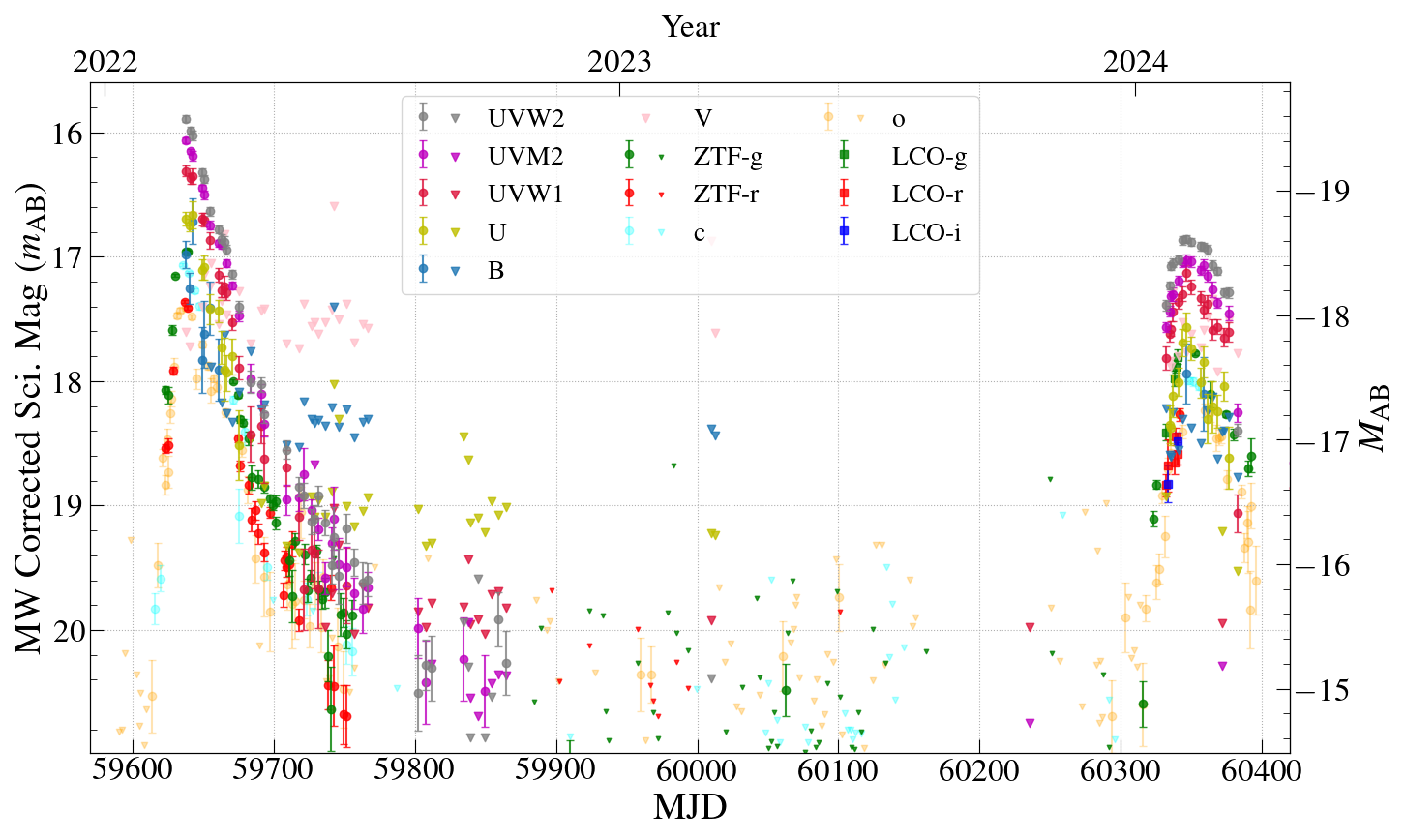When a star moves around a supermassive black hole (SMBH) in a close elliptical orbit, it gets partially tidally disrupted every time it reaches the pericenter, emitting a series of luminous flares, known as partial tidal disruption event (pTDE).
A research team from the University of Science and Technology of China (USTC) recently discovered another outburst of a previous TDE, AT 2022dbl, and confirmed that it’s highly likely caused by SMBH repeatedly tidally disrupting the same star, making it the first spectroscopically confirmed repeating pTDE. Their work was published on The Astrophysical Journal Letters.
When a star is tidally disrupted and accreted by a black hole, it produces a strong electromagnetic flare, which typically brightens rapidly to its peak within a few tens of days and then gradually fades over several months to years. In recent years, a few TDE candidates have been observed to rebrighten several years after the initial event. These are considered candidates for repeating pTDE events, where the black holes only partially disrupt and accrete the stellar material each time. However, the confirmation of repeated pTDE is complicated because it requires proof that only one star is involved, as multiple independent TDE could also produce similar flares. Previous candidates lack strong observational evidence beyond light curves, and thus have not been widely accepted by the scientific community.

The UV/optical light curves of AT 2022dbl. (Image by Lin et al.)
In the hope to discover repeated pTDEs and conduct timely observations, the research team began to focus on follow-up light curves of known TDEs. In January of this year, upon detecting the rebrightening of AT 2022dbl, the team immediately triggered multi-wavelength photometric monitoring by the Swift satellite and the Las Cumbres Observatory (LCO). They also obtained a high-quality early spectrum of the repeated flare using the Hale telescope at the Palomar Observatory (P200), ultimately confirming that the repeated flare originated from a TDE.
More interestingly, the spectrum of this flare showed emission line features indicative of overabundant nuclear synthesis elements from the star's interior, which were strikingly similar to those observed in the previous flare of AT 2022dbl, suggesting that the flares likely originated from the disruptions of the same star.

Spectra of both flares of AT 2022dbl. (Image by Lin et al.)
Based on the observation data, the research team concluded that this "unlucky" star might have been pulled out of a stellar binary by the black hole and captured into a highly eccentric elliptical orbit. It undergoes repeated tidal disruptions and "feeding" each time it passes close to the black hole. This research suggests that repeated pTDEs might not be uncommon and that some previously discovered conventional TDEs might actually be repeated pTDEs, which are often overlooked in studies on optical TDEs. This finding is significant for redefining the statistical population and physical processes of optical TDEs.
Additionally, this study underscores the importance of long-term, high-cadence multiband monitoring of TDEs. It is worth mentioning that TDEs are one of the core scientific targets of the Wide Field Survey Telescope (WFST), jointly constructed by USTC and the Purple Mountain Observatory. The research team expects to discover more similar events using WFST, thereby advancing our understanding of TDEs.
Paper link: https://doi.org/10.3847/2041-8213/ad638e
(Written by SHI Yutian, edited by ZHANG Yihang, USTC News Center)